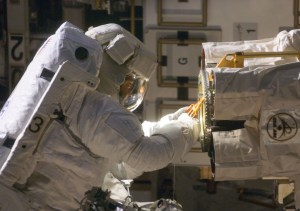During a press conference on June 15, 1970, at NASA Headquarters in Washington, DC, Apollo 13 Review Board Chair Edgar M. Cortright released the final report of the group’s investigation into the accident that crippled the Moon-bound spacecraft, putting the three astronauts’ lives at risk. Cortright summarized the report’s findings that the accident “was not the result of a chance malfunction in a statistical sense but, rather, it was the result of an unusual combination of mistakes coupled with a somewhat deficient and unforgiving design.”

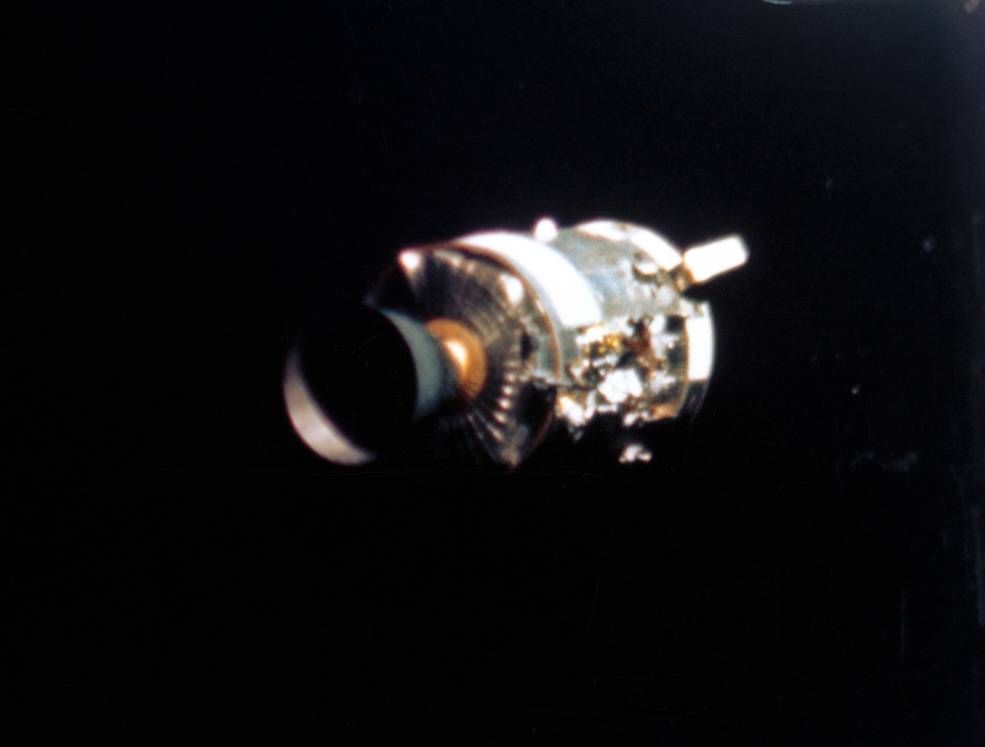
Left: Apollo 13 Review Board Chairman Cortright during a press conference.
Right: View of the Apollo 13 Service Module showing the damage from the explosion.
On April 13, 1970, while traveling 205,000 miles from Earth toward the Moon, an explosion rocked the Apollo 13 spacecraft, putting the lives of astronauts James A. Lovell, John L. Swigert and Fred W. Haise in jeopardy. Their goal of accomplishing the third human lunar landing quickly abandoned, the astronauts, with the help of engineers and controllers in Mission Control at the Manned Spacecraft Center (MSC), now the Johnson Space Center in Houston, stabilized their spacecraft and, using their Lunar Module as a lifeboat, as well as through judicious use of onboard resources, successfully splashed down in the Pacific Ocean on April 17. That same day, NASA Administrator Thomas O. Paine and Deputy Administrator George M. Low established the Apollo 13 Review Board to investigate the causes of the accident, appointing Langley Research Center Director Cortright as its Chair. Four days later, Paine named seven members to the Board, including former Apollo 11 astronaut Neil A. Armstrong.
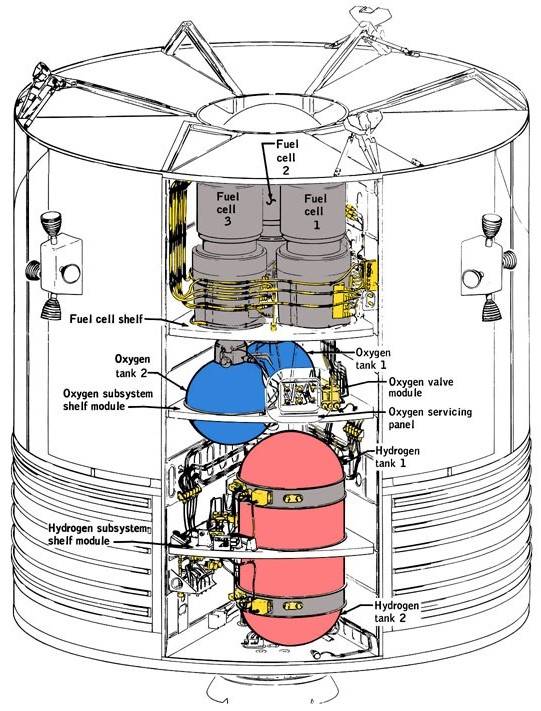
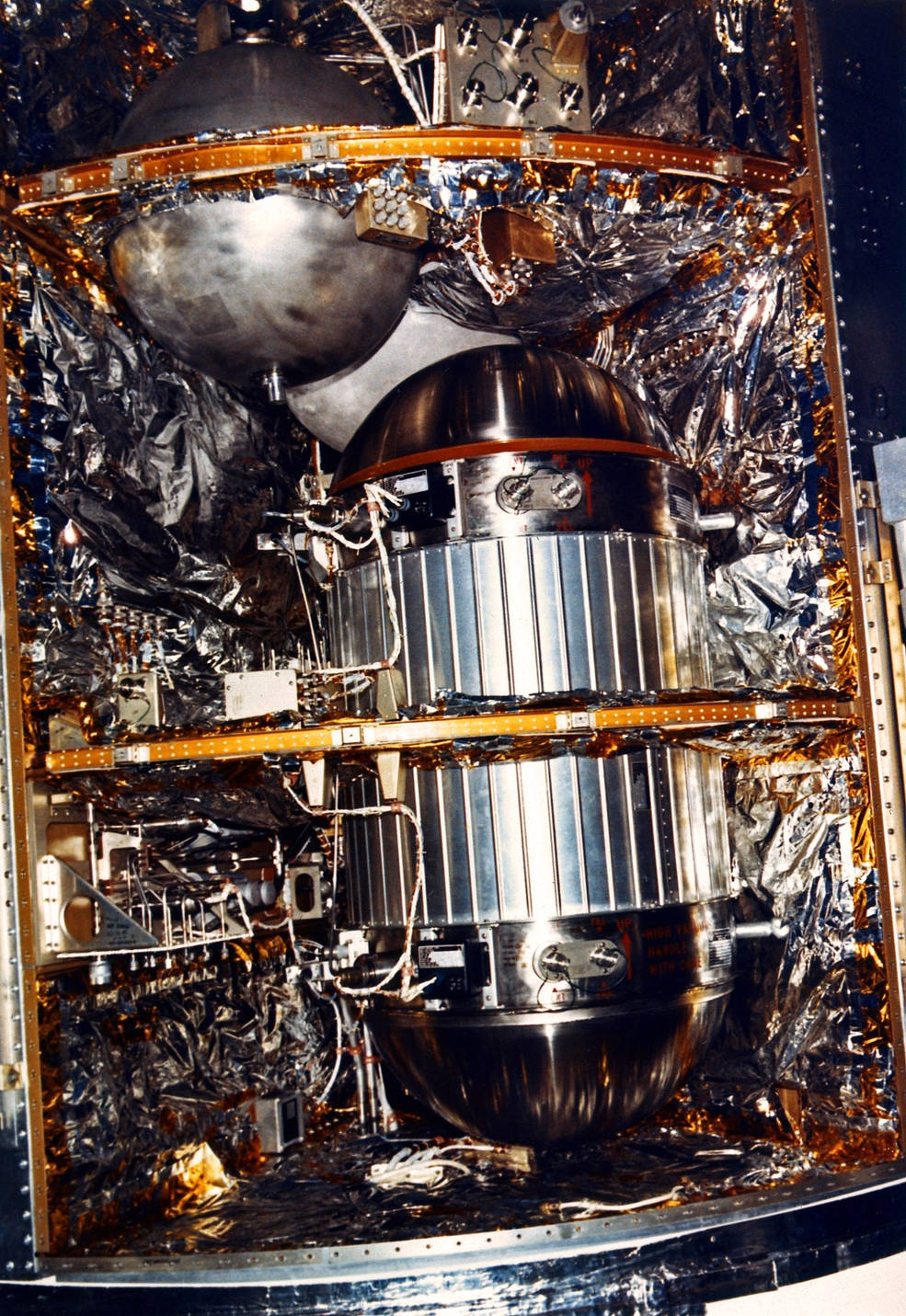
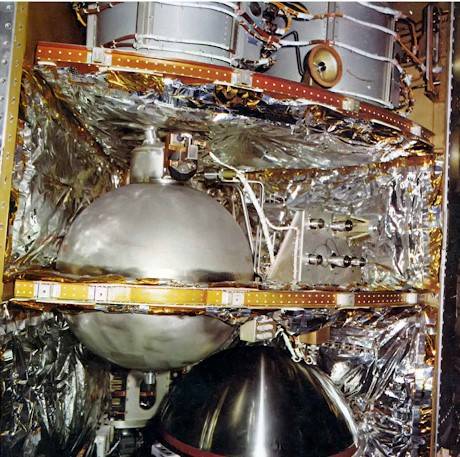
Left: Schematic showing the location of the SM tanks and fuel cells. Middle: Prelaunch photograph of Apollo 13 SM showing the hydrogen tanks in the center and oxygen tank number 2 at top left. Right: Prelaunch photograph of Apollo 13 SM showing oxygen tank 2, with two of the fuel cells partially visible at top.
The Board conducted seven weeks of investigations, working in close collaboration with the MSC Apollo 13 Investigation Team led by Apollo Spacecraft Program Manager James A. McDivitt. Four panels investigated different aspects of the accident, including the mission timeline, manufacturing and testing, design and project management. Review of the mission events confirmed the accident occurred at approximately 55 hours and 55 minutes into the flight, with the crew reporting an electrical event accompanied by a loud bang, followed a few minutes later by a visual sighting of the spacecraft venting something overboard. On the ground, Mission Control noted that telemetry from the spacecraft dropped out for 1.8 seconds preceding the crew report of the problem, followed by a drop in the pressure in oxygen tank number 2 and current drops in fuel cells 1 and 3. Later, pressure in oxygen tank 1 also dropped. Given the timeline of events and the location of the various components in the Service Module (SM), the investigation focused on oxygen tank 2 as the cause of the accident.
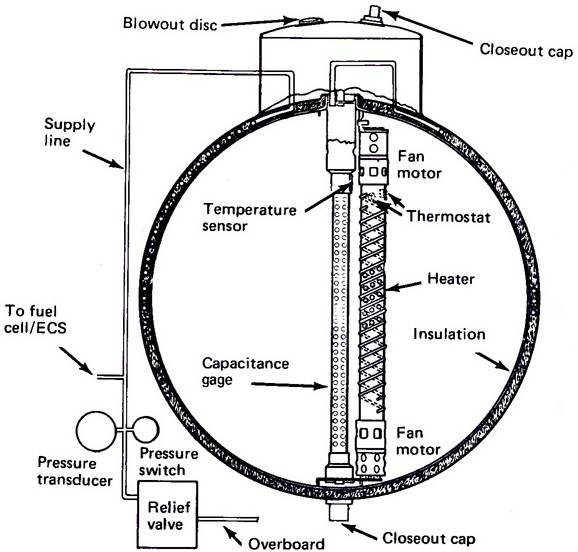
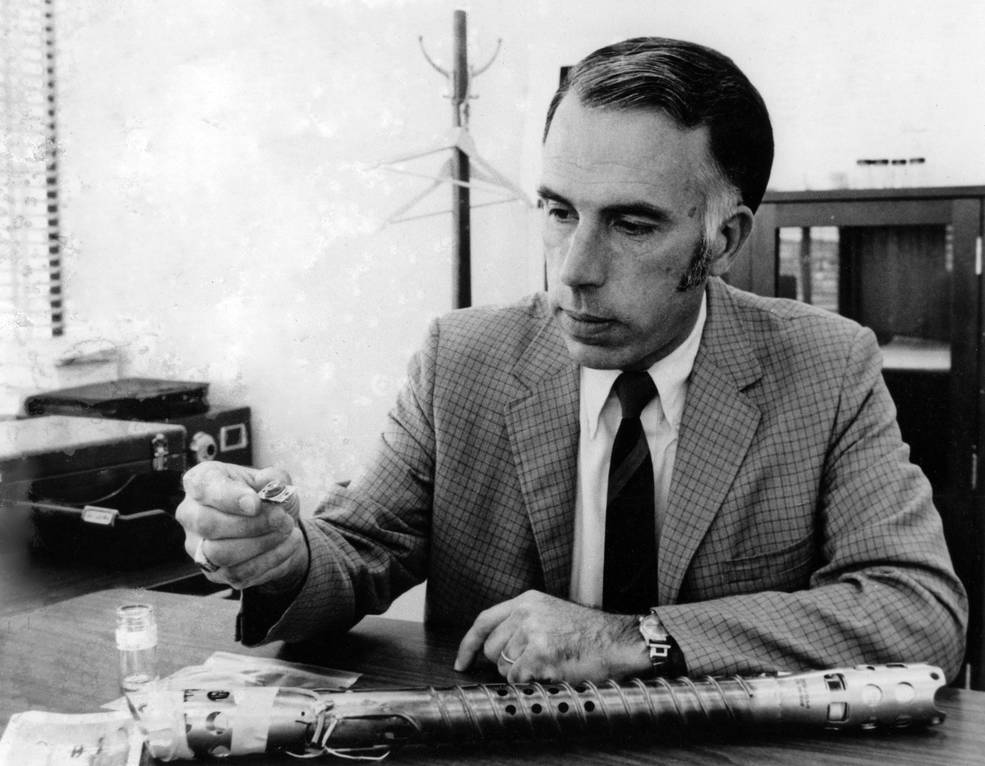
Left: Schematic of the SM oxygen tank. Right: Cortright demonstrates the oxygen tank heater.
The liquid oxygen tanks flown in the Apollo spacecraft were designed and built by Beech Aircraft Corporation of Wichita, Kansas, under subcontract to North American Rockwell (NAR), the prime contractor for the Apollo Command and Service modules manufactured at their plant in Downey, California. Each SM carried two identical oxygen tanks mounted on a shelf in the module’s bay 4, above two liquid hydrogen tanks and below the three fuel cells that used oxygen and hydrogen to generate electricity for the spacecraft, with water created as a byproduct. To maintain proper and even temperatures and pressures, each oxygen tank was equipped with a heater and fans, as well as a temperature gauge. Each tank also contained a fill and drain system to allow filling and emptying the tanks, including as the spacecraft sat atop its Saturn V rocket on the launch pad. The oxygen tank assembly aboard Apollo 13 had originally been installed in the SM assigned to Apollo 10, but to implement design changes to the tanks, engineers at NAR Downey removed them in October 1968. During that process, the tanks were inadvertently dropped about two inches, possibly causing damage to the fill and drain system. Technicians recorded the incident but engineers at the time did not believe it caused any damage to the tanks that were later installed in Apollo 13’s SM in November 1968.
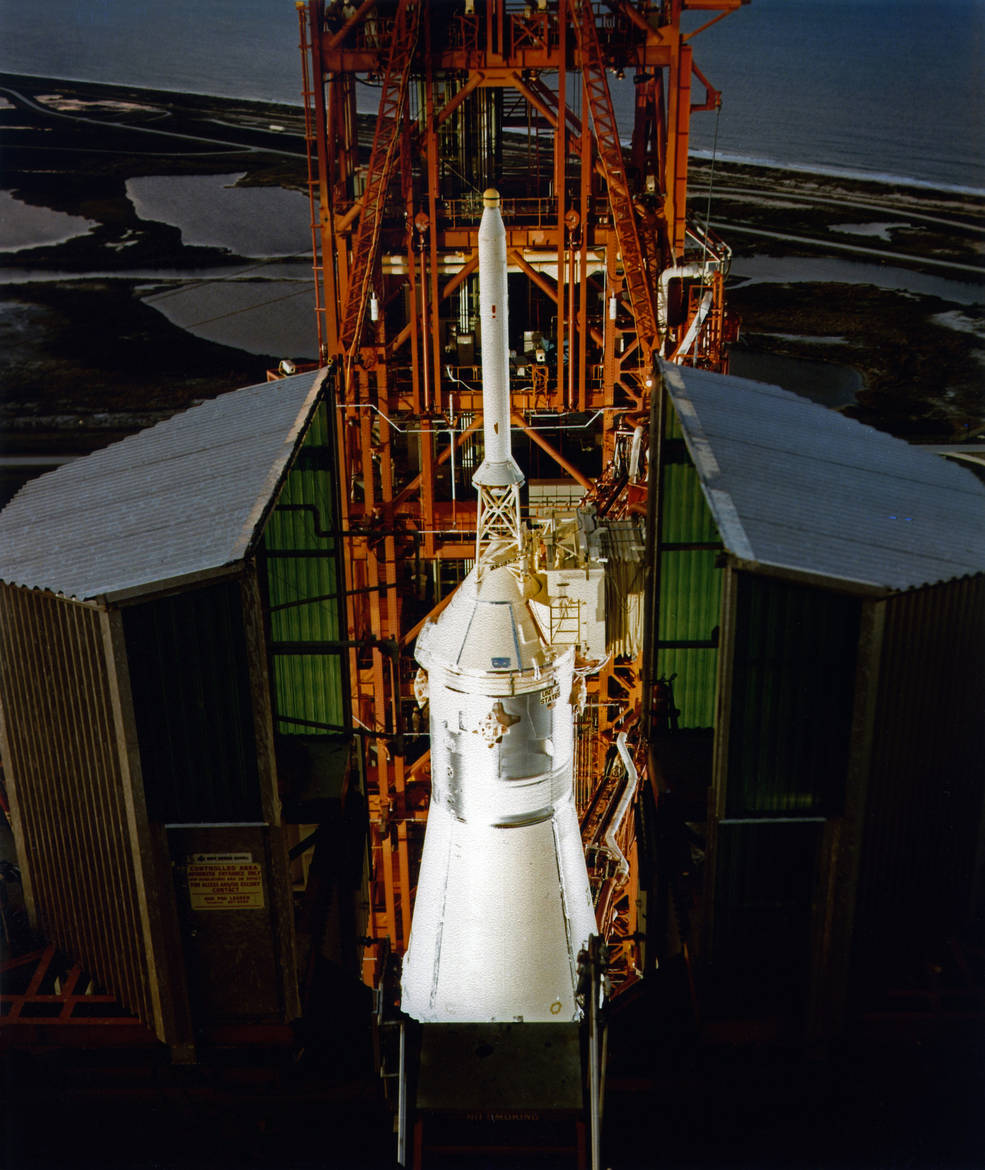
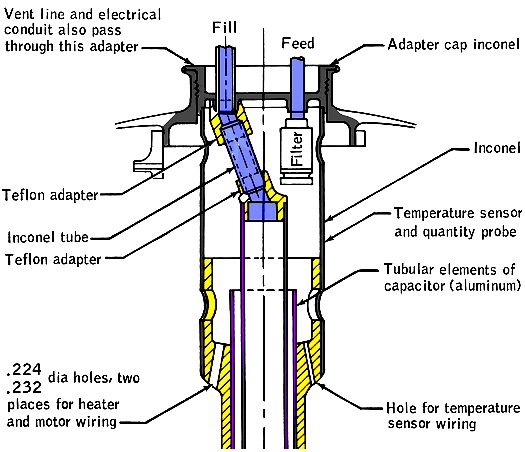
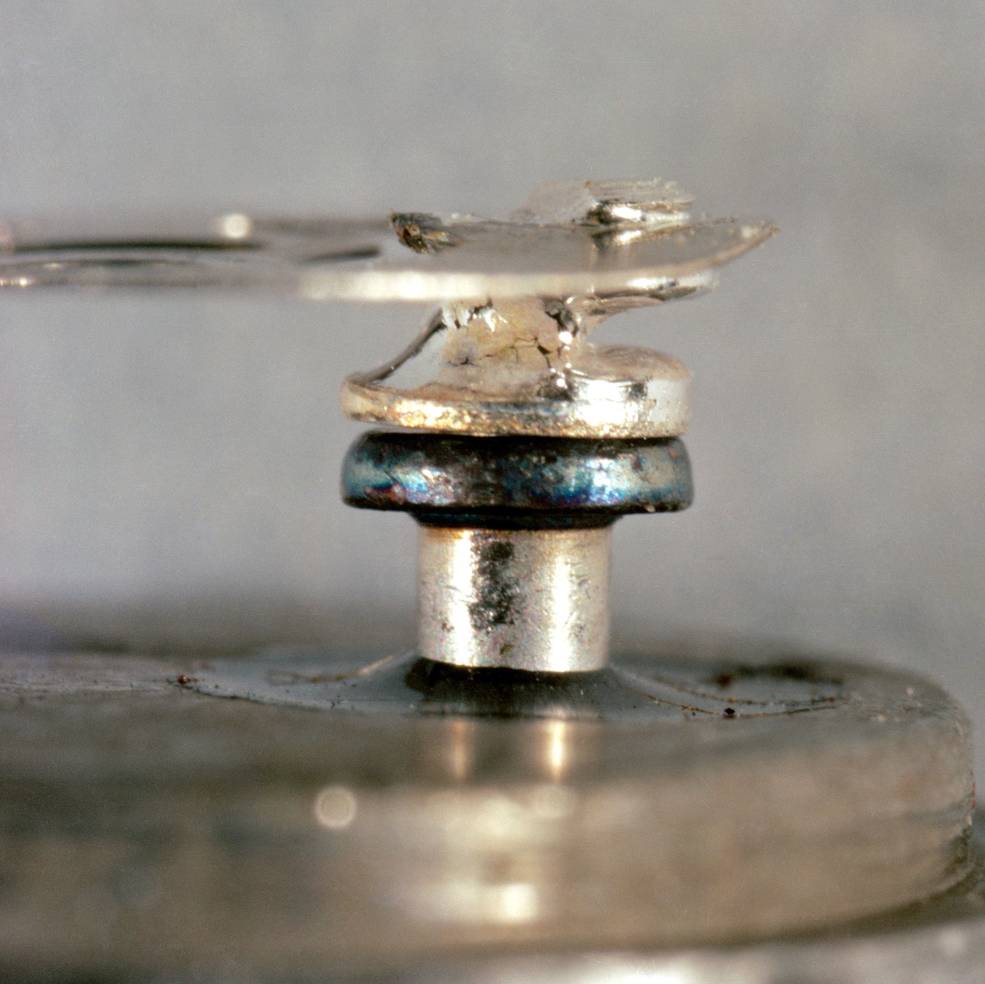
Left: View of the Apollo 13 spacecraft atop its Saturn V rocket during the CDDT. Middle: Schematic of the fill and drain system of the oxygen tank. Right: Thermostat damaged during a postflight test by excess current, as likely happened during the accident.
During Apollo 13’s Countdown Demonstration Test (CDDT) on March 25, 1970, when engineers attempted to partially drain the oxygen from the two SM oxygen tanks, tank 1 emptied normally but tank 2 only emptied by about 8%, possibly due to a problem with the fill line. The day after the end of the CDDT, engineers returned to the balky SM oxygen tank, attempting to vent the remaining oxygen through the fill line but only reducing the quantity to 65%. They attempted another normal detanking procedure and tank 1 emptied as expected but tank 2 did not, despite repeated efforts using higher pressures. They next attempted to boil off the oxygen using heaters and fans in the tank, powering them using 65 V ground support equipment power. The tank finally emptied after eight hours and five heater cycles. What the engineers did not know was that thermostat switches in the tank’s heater circuit were rated to operate only at the 28 V DC power supplied by the spacecraft. The switches were designed to open the circuit when the heater reached 80o F but failed under the higher voltage and it is likely the heater tube reached up to 1,000o F. Because the temperature gauge for the heater could only record temperatures up to 85o F, engineers were unaware of this highly off-nominal situation. The high temperatures very likely damaged Teflon insulation around nearby wiring. The engineers did not know this at the time, and decided it would not be necessary to replace the oxygen tank, a process that would have led to a costly delay of Apollo 13’s launch. Before launch, engineers filled the tank with the damaged wiring insulation with liquid oxygen, a dangerous situation even as the rocket sat on the pad and much more so once the spacecraft was on its way to the Moon.
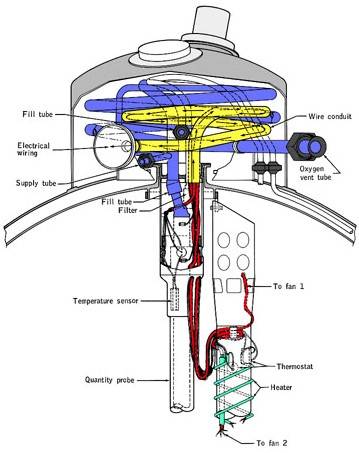
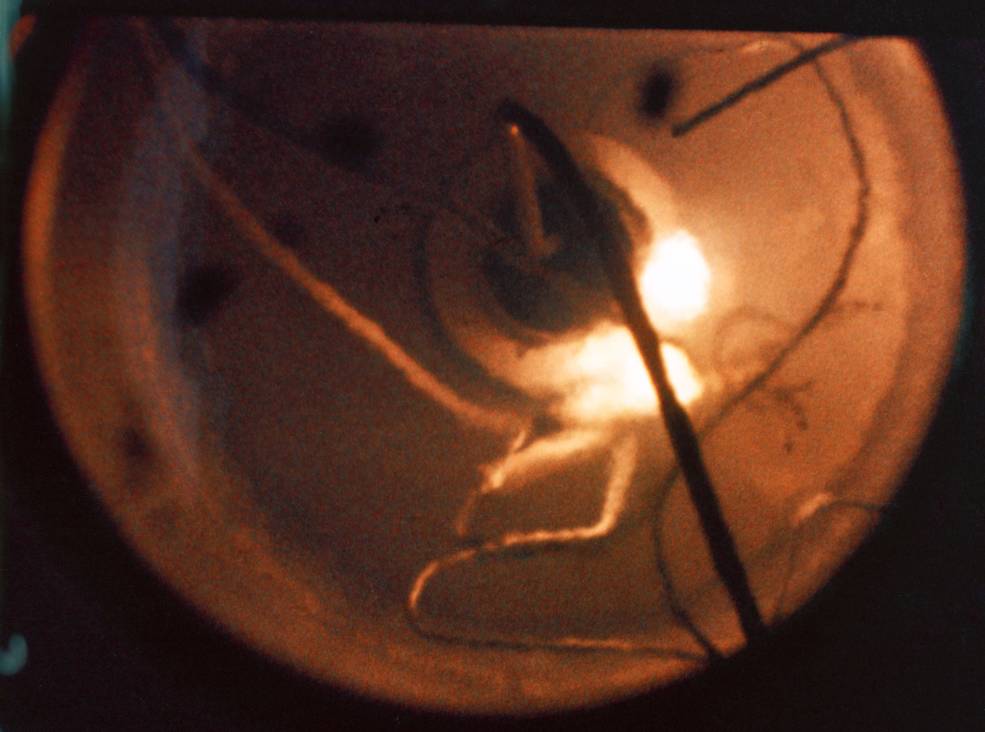
Left: Schematic of the top assembly of the oxygen tank. Right: Teflon insulation in an oxygen tank burning during a postflight test in liquid oxygen.
Less than two minutes before the explosion, Mission Control requested that the astronauts turn on the fans in all four SM tanks to ensure proper mixing of the cryogenic liquids. They had stirred the oxygen tanks on two previous occasions during the mission with only erratic pressure readings, but this time, likely due to the damaged Teflon insulation, a short-circuit occurred triggering a spark resulting in a combustion event. The pressure tank lost integrity and the oxygen escaping at high velocity caused the panel covering bay 4 to be blown off. This damaged the spacecraft’s high gain antenna located at the base of bay 4, accounting for the temporary loss of telemetry, as well as either oxygen tank 1 itself or its plumbing resulting in the slow loss of pressure. Without oxygen, the fuel cells could no longer generate electricity. Ground tests conducted for the Review Board confirmed these conclusions.
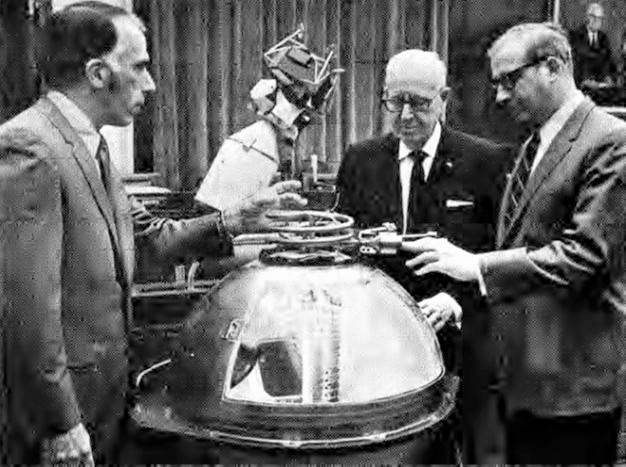
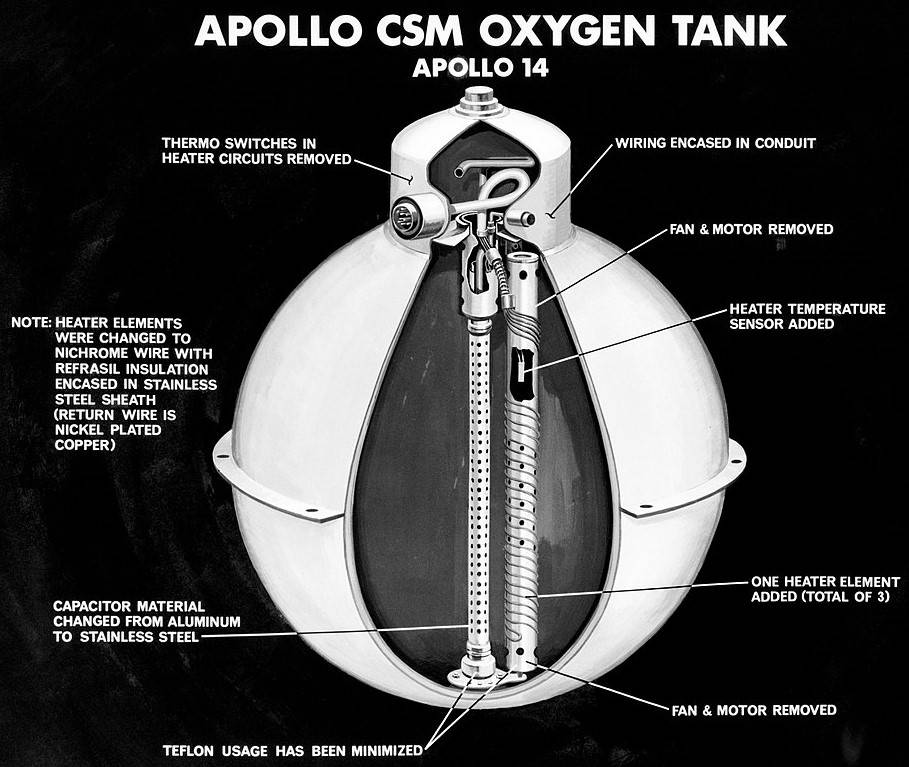
Left: Cortright (at left) and Paine (at right) describe the oxygen tank to Rep. Miller before the House committee hearing. Right: Schematic of the oxygen tank for Apollo 14 and subsequent missions highlighting the changes made.
On June 16, Cortright summarized the Board’s findings in a hearing before the House Committee on Science and Aeronautics, chaired by Rep. George P. Miller of California. In addition to the findings summarized briefly above, Cortright informed the committee of the Review Board’s recommendations that included redesign and recertification of the SM oxygen storage system, a thorough review by NASA of all Apollo systems that use cryogenic oxygen including special attention to materials compatibility, ensuring that any anomaly reviews include complete histories of the components, and that management and organizational structures be strengthened to ensure adequate understanding of engineering and manufacturing processes of subsystems. Engineers at NASA and NAR redesigned the oxygen tank system for Apollo 14 and subsequent missions by adding a third tank in a different bay, upgrading the thermostats, removing the stirring fans, and sheathing all electrical wiring in stainless steel. The investigation into the Apollo 13 accident and the subsequent redesign efforts caused the launch of Apollo 14 to slip from its original October 1970 date to January 1971.



























